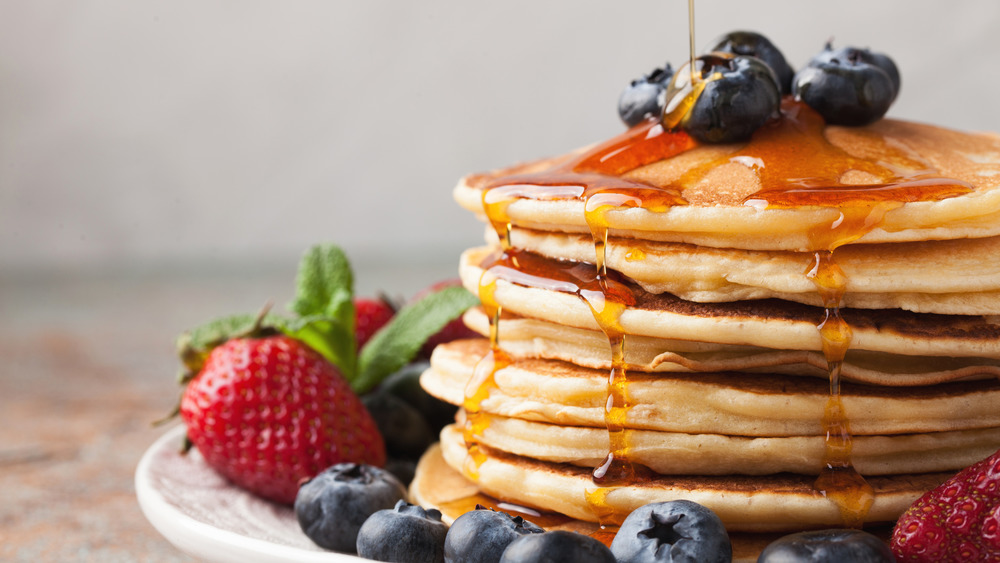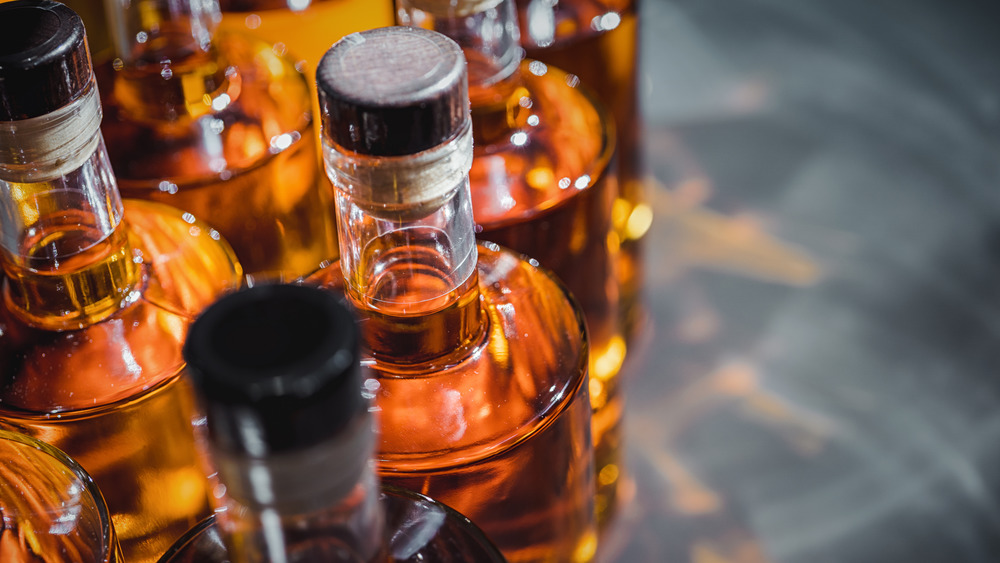Why You Should Check The Label Before Buying Maple Syrup
There's nothing quite like the anticipation of a huge weekend brunch as we sit at our desks during lunch hour pounding down a bland salad: The fresh juice, the fluffy eggs, and the stack of warm pancakes just waiting to be drizzled with maple syrup. Yes, brunch is definitely worth the extra calories. But before you take in even more than you had planned, check to make sure the syrup you've purchased is what you think it is.
According to Healthline, maple syrup is the sap that has been boiled down and extracted from sugar maple trees. It is a natural sweetener and comes in three different grades: light amber, medium amber, and dark amber. Dark amber is considered to be the strongest in taste and is often used in baking, while light amber is more popular to use as a topping. So before you turn the bottle around to look at the ingredients, the first thing to look out for is that the product claims to be "maple syrup" and not "maple-flavored syrup" or "pancake syrup". So what exactly are these imposters made of?
The biggest difference can be found on the back of the bottle
When you flip to scan the ingredients on the back of the syrup bottle, you'll know if you've purchased real maple syrup if the only ingredients listed are "Organic Maple Syrup" or "Pure Maple Syrup," notes Chowhound. Processed options will most likely have a long list of ingredients and additives like "high fructose corn syrup" and "added coloring." High-fructose corn syrup (HFCS) is an artificial sugar made from corn syrup, claims Healthline. It adds an unnatural amount of sugar to your diet and has been linked to fatty liver disease and an increased risk of diabetes and other serious diseases.
But when it comes down to it, neither real maple syrup or its shared shelf counterparts are exactly "healthy." Yes, real maple syrup contains vitamins and minerals like iron and zinc, and a host of antioxidants, states Healthline, but it's still sugar. And sugar, whether from a natural or manufactured source should be consumed in moderation.
So which bottle to choose? Both may be sitting next to each other in the syrup aisle. Both may be the same color, and have a photo referencing a picturesque maple leaf or log cabin. But now that you know the health differences between the two and how it's all about moderation, we hope you can enjoy those syrup-soaked pancakes you've been waiting for all week.


